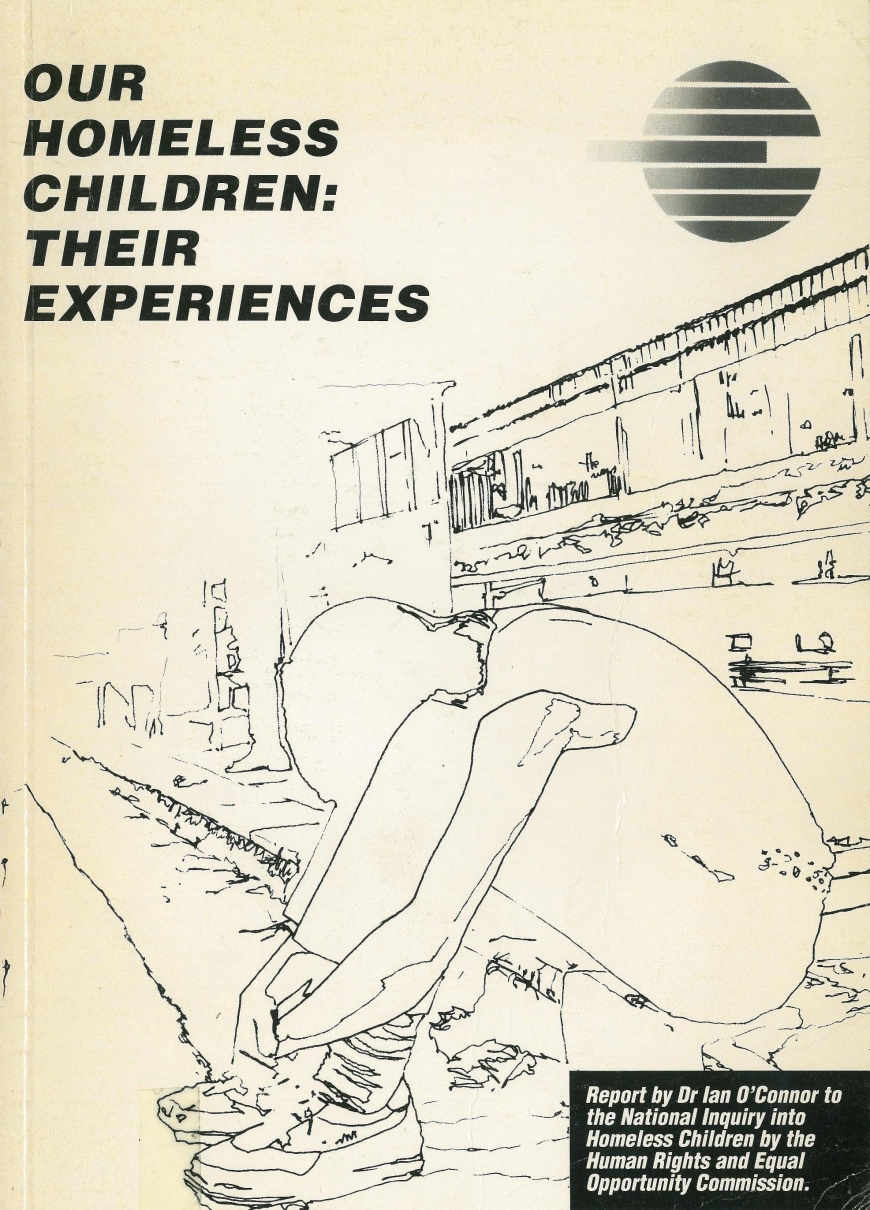Our Homeless Children: Their Experiences
Archived
You are in an archived section of the website. This information may not be current.
This page was first created in February, 2016

Report by Dr Ian O'Connor to the National Inquiry into Homeless Children by the Human Rights and Equal Opportunity Commission
The following report is an edited version of a more detailed report commissioned by the Human Rights and Equal Opportunity Commission as part of its Inquiry into homeless children ('Most of us have got a lot to say and we know what we are talking about': Children's and Young People's Experiences of Homelessness). The Commission sought evidence through public hearings and written submissions. Recognising that neither were alone adequate avenues for homeless young people to put their perspectives before the Inquiry, research was commissioned into children's and young people's experiences and perspectives of homelessness.
TERMS OF REFERENCE
The project aimed to facilitate the Commission's Inquiry by placing details of young people's experiences and perceptions and an examination of the human rights implications of their accounts before the Commission. In conceptualising, undertaking and analysing the research, reference was directed to the United Nations Declaration of the Rights of the Child and, in particular, to:
(i) Principle Two, which provides that the child shall enjoy 'special protection";
(ii) Principle Four, which provides that the child has the right to 'adequate nutrition, housing, recreation and medical services"; and
(iii) Principle Nine, which provides that the child 'shall be protected against all forms of neglect, cruelty and exploitation'.
AIMS OF THE RESEARCH
1. To describe the experiences of homelessness as perceived by homeless children and young people;
2. To document homeless children's and young people's perceptions of the causes and triggers of homelessness. In this context the research considered the role played by families and peers and the education, employment, income security, housing, criminal justice and child welfare systems;
3. To take into account factors such as age, gender, ethnicity, race, place of origin and class on experiences of homelessness, giving particular attention to the impact of institutionalisation (for offenders and non-offenders); and
4. To ascertain what, if any, human rights homeless children and young people understand they have and to ascertain which, if any, of these human rights homeless children and young people perceive as being abused.
The methodology of the research is discussed in the body of the report. It suffices to state here that the research process was underpinned by the stance that the Inquiry would benefit from taking into account the perspectives and experiences of young people. I believe that this report supports that proposition.
I wish to acknowledge the support and assistance provided by Father Wally Dethlefs, Amanda Bowden, Commissioner Brian Burdekin, Lurline Comerford, Warren Simmons, Roger Gaven, Gerard Dowling and Clare Arthurs. Interviews for this research were conducted in Brisbane
and the Gold Coast by Lurline Comerford, in Sydney by Warren Simmons and in Canberra by Peter See, Paul Adcock and Sarah McQueen. I wish to thank Joan Daniel for the typing of this report. Assistance with typing the report and transcripts of interviews was also provided by Judy Morris and St. Lucia Secretarial Services. This report was edited for publication by Pamela Sweetapple. Assistance was also provided by a myriad of youth services in our efforts to locate homeless young people. Sincere thanks is expressed to the one hundred young people who participated in the interviews.
Ian O'Connor, PhD.
Department of Social Work, University of Queensland
